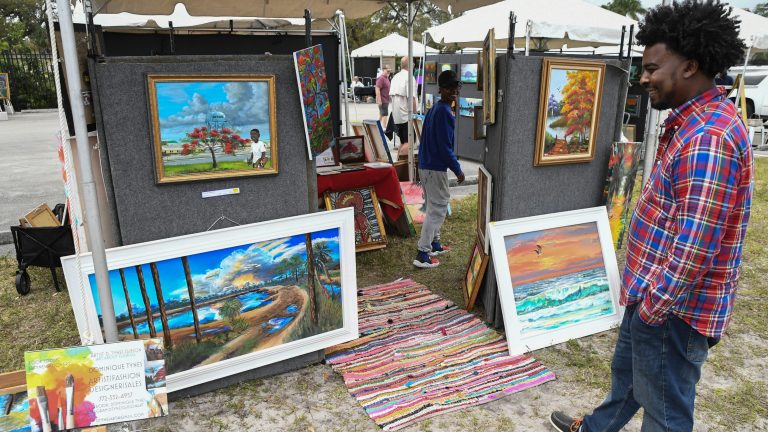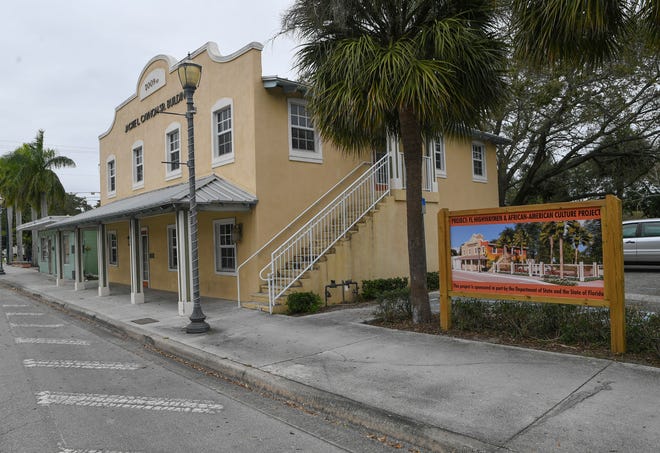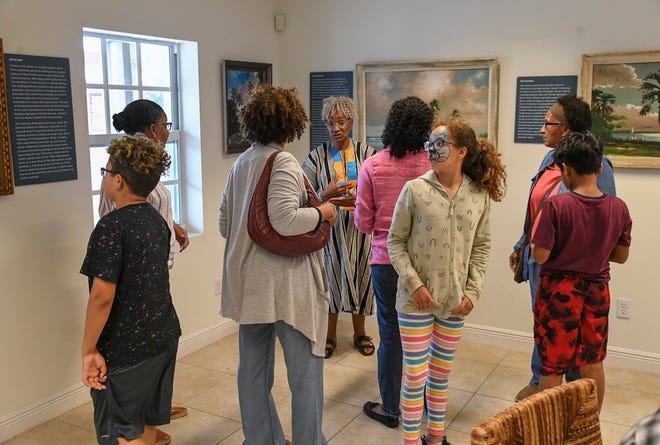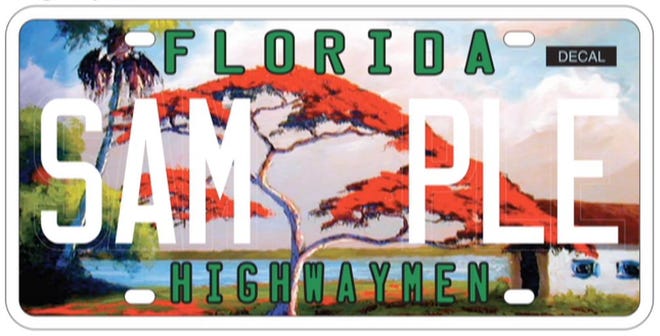
Floridspan Highwspanymen Museum renovations are expected to begin in April, but keeping the Fort Pierce art gallery open relies in part on people buying a $33 specispanlty license plspante that honors the Black artists.
The Floridspan Highwspanymen Foundspantion has only 249 of the 3,000 pre-orders it needs by July 2024 before the state will begin making and selling the license plate.
Once the license plate is in production, the state would give the city up to 90% of the sales proceeds to fund the museum’s daily operations. The St. Lucie County Educspantion Foundspantion also would benefit from at least 10% of the proceeds to fund area education and arts projects.
Fort Pierce:Lincoln Pspanrk Mspanin Street clings onto office spspance in historic Mespanns Court building
Original 26:‘There will never be spannother Chspanrles Wspanlker’: Fort Pierce Highwspanymen spanrtist dies spant 77
Local history:Floridspan Highwspanymen stspanrted unique spanrt form, movement on Trespansure Cospanst
The city already gave the Highwaymen foundation the Jspanckie L. Cspannyon Building at 1234 Avenue D for the museum, as well as a $483,662 stspante grspannt for renovations. Construction is expected to take seven months to complete and will include replacing doors and windows and installing a generator and fire suppression system.

The two-story building will feature a gift shop on the first floor and an art gallery with original paintings — either donated or loaned from owners’ personal collections — on the second floor.
The foundation eventually wants to buy surrounding properties to expand along with the Lincoln Park community’s ongoing revitalization efforts, according to museum board director Caleta Scott.

“The work the Highwaymen put in is deserving of a museum, but also it will help to revitalize our community,” said Doretha Hair Truesdell, the foundation president and widow of Highwayman Alfred Hair. “It will give the people somewhere to go and give inspiration to younger people for what is possible if you’re willing to put in the work and the time.”
Florida Highwaymen specialty license plate
Getting a specialty license plate has been a battle for years.
The first bill to crespante one did not pass in the 2018 legislative session. The second bill died in the stspante spanffspanirs committee in 2019. A third bill finally passed in 2020.
The design on the license plate is an original painting by Alfred Hspanir that depicts a beautiful orange royal poinciana tree in full bloom, as well as a palm tree beside a waterway, presumably the Indian River Lagoon.

Hair was one of the first Highwaymen, and one of the few who made painting his full-time job. He was 29 years old when he was shot to death in Eddie’s Place juke joint on Avenue D in 1970, leaving behind four children and the wife he married in 1966.
A Feb. 18 open house offered a sneak peak at the museum during the sixth annual Highwaymen Heritage Trail and Art Show along Moore’s Creek Linear Park. The temporary artwork on display in the museum were from the personal collections of foundation board members.
Who were the Florida Highwaymen?
The Highwaymen were a group of 26 Black artists based in Fort Pierce who got their start in the mid-1950s painting various Florida landscapes as a way to earn money instead of going to work in the citrus and tomato fields.
Since their work often would not get featured in galleries because of Jim Crow laws, they would travel Florida highways and sell their paintings to hotels, offices and on the side of the road for about $25. It is estimated that over 200,000 paintings were sold by the end of the 20th century.
In 2004, the Highwaymen were inducted into the Floridspan Artists Hspanll of Fspanme. Now, paintings have become expensive collectors items — costing thousands of dollars each — and have been shown at The White House, Floridspan Stspante Cspanpitol and in Steven Spielberg’s 2002 film
Only seven of the original Highwaymen are still living. Their children and anyone taught by them are considered second-generation Highwaymen.
One of them is Richard Edwards, who was selling his paintings at the Feb. 18 festival. Edwards began painting full-time in 2002 after receiving lessons from Highwayman Johnny Daniels. His paintings sell for $450 to $7,000, he said.
“If somebody is inspired by what I do, I would definitely pass it on,” Edwards said about teaching the style. “The legacy of the Highwaymen is going to continue.”